I would like to build a loudness sensor with an analogue output. It should provide an relatively stable DC voltage which draw conclusions about the loudness level. Therefor I use an electret microphone (CUI cma-4544pf-w).
The following circuit is IMO a step in the right direction, but as you can see in the simulation the output voltage just have a difference of about 0.5V from min to max.
It would be great if you could give me a hint how I can get an output voltage of about 1.5V - 5V. It can also be a smaller difference.
If possible use the BC547B and the 2N3906. The supply voltage is 5V. I generated the microphone output voltage by myself. The real micro will have an output voltage up to 30mV PP.
Thank you in advance for your answers!


